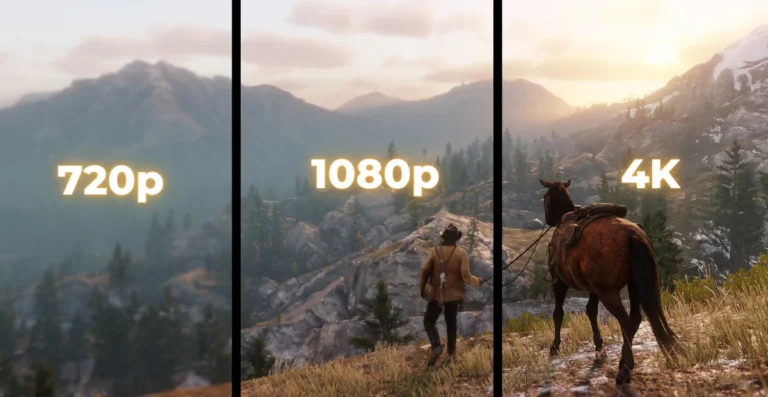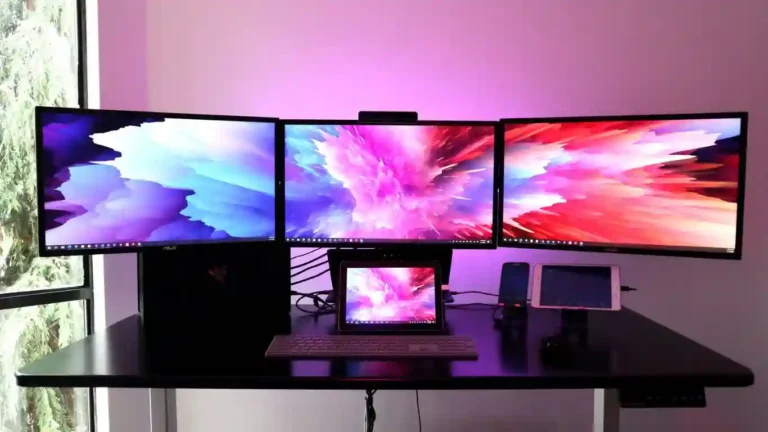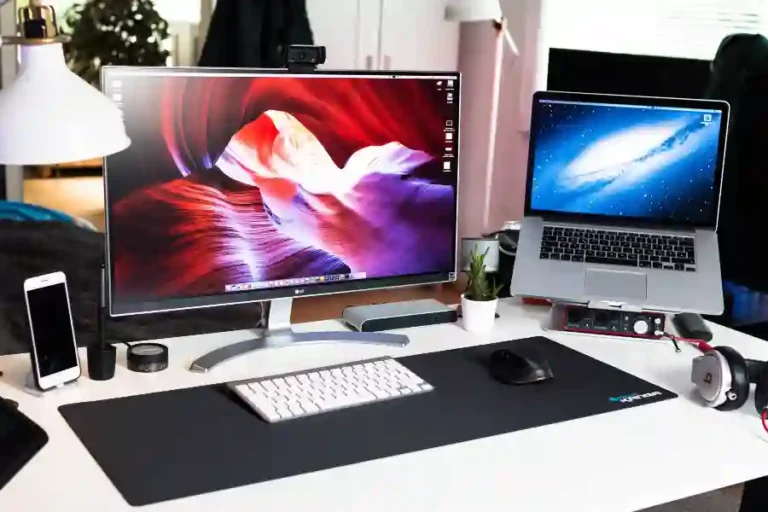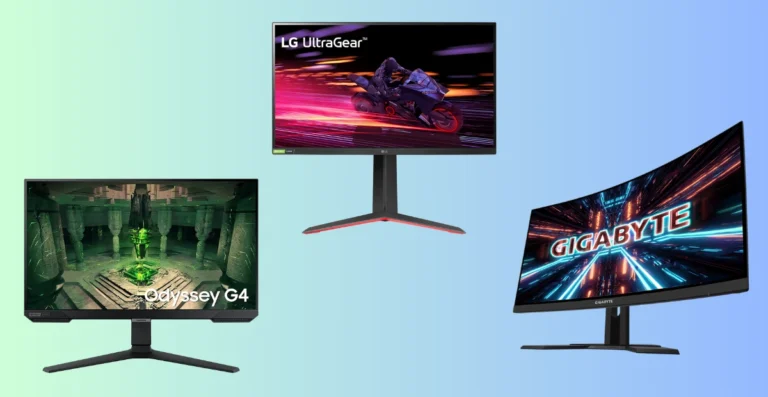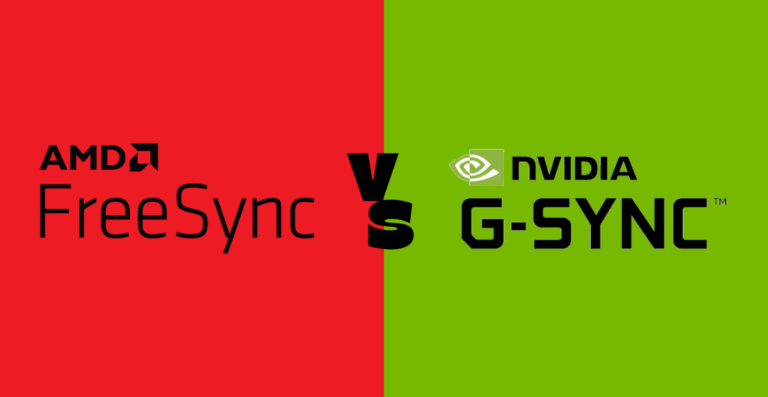IPS vs TN vs VA: Which is best for your display?

- IPS panels are best for colour accuracy and wide viewing angles. They are ideal for professional use, gaming, or general use.
- TN panels are best for fast response times. They are ideal for competitive gaming.
- VA panels offer a good balance of image quality and response times. They are ideal for watching movies or for general use.
I know you will search for 4K, 2K, or 1080P resolution monitors in the first place. Yes, the screen resolution is indeed Vital. Panel type will also have a significant impact on the image quality.
Panel technologies play a pivotal role in defining the quality of your display. IPS (In-Plane Switching), TN (Twisted Nematic), and VA (Vertical Alignment) panels each offer distinct characteristics that impact colour accuracy, viewing angles, response times, and overall visual experience.
So, choosing the right panel type depends on the experience you want to have, whether for gaming, professional design, content creation, or general use. Understanding this difference will help you match the panel’s strengths with your requirements. Read the How to Choose the Best Monitor guide to know what other factors you have to check before choosing the monitor.
| Features | IPS | TN | VA |
|---|---|---|---|
| Response Time (GtG) | 4ms or faster | 1ms or faster | 4ms or faster |
| Refresh Rate | 120Hz or higher | 120Hz or higher | Up to 144Hz |
| Colour Gamut | 95% sRGB or higher | 72% sRGB or higher | 85% sRGB or higher |
| Contrast Ratio | 1000:1 or higher | 1000:1 or higher | 3000:1 or higher |
| Viewing Angles | Wide (up to 178 degrees) | Narrow (up to 160 degrees) | Wide (up to 178 degrees) |
| Colour Accuracy | Excellent | Good | Good |
| Panel Cost | High | Low | Medium |
| Strengths | Excellent colour accuracy, wide viewing angles, fast response times | Fastest response times, affordable | High contrast ratio, good colour accuracy, balanced performance |
| Weaknesses | Blacklight bleed, higher cost | Narrow viewing angles, limited colour gamut | Black smearing in fast-paced content |
| Best For | Color-critical work, general usage, gamers | Competitive gaming, budget-conscious users | Watching movies, multi-tasking, gamers who don’t need the fastest response times |
RELATED:
Let’s dive into the heart of the matter:
IPS(In-Plane Switching): The All-Rounder Champion
IPS panels consistently impress with their stunning colour accuracy and wide viewing angles. Whether editing photos, watching movies, or browsing the web, the colours appear natural and vibrant from almost any angle.

It has a wide viewing angle of 178°, which means you can look at the screen from any angle without the shift in image colour and contrast.
Thanks to technological advancements, IPS panels have a response time (~1 ms) as fast as TN panels. Even though some monitors have a response time of less than 1 ms, some IPS variants also come with a slow response time of 4 to 5 ms.
For casual gamers, slow response time doesn’t bother you since ghosting is barely visible. For fast-paced games, you need fast response time monitors.
However, IPS panels aren’t without their drawbacks. They tend to be more expensive than their TN and VA counterparts. But nowadays, you can easily find IPS monitors priced equal to or slightly higher.
Another thing you need to know is that the IPS panel’s contrast is not that great as it has a standard ratio of 1000:1. Which is low compared to the VA panels, which have a contrast ratio of 3000:1.
Additionally, some users might notice a slight backlight bleed, where the light from the backlight leaks around the edges of the screen. These drawbacks are mostly tolerable for many users.
Nowadays, most IPS monitors are performing well in every aspect. You get great viewing angles, natural and vibrant colours, fast response time, and a high refresh rate.
Advantages:
- Excellent colour reproduction: It is ideal for colour-critical work like photo editing, graphic design, and video editing.
- Wide viewing angles: Perfect for sharing your screen with others or working in multi-monitor setups.
- Fast response time: Offers a smooth and responsive experience for everyday tasks and gaming.
Disadvantages:
- Cost: Typically more expensive than TN and VA panels(Not much).
- Blacklight bleed: Some users may notice slight light leakage around the edges of the screen.
- Contrast ratio: Lower than VA panels, resulting in slightly less vibrant blacks.
Who should choose IPS:
- Digital artists and designers who prioritize colour accuracy.
- Content creators and editors who need a reliable display for their work.
- Casual users who value a vibrant and accurate visual experience.
- Gamers who want a good balance of image quality and performance.
TN (Twisted Nematic): The Speed Demon

For gamers seeking unparalleled responsiveness, TN panels are the undisputed champions. Their blazing-fast pixel response times ensure smooth and blur-free action, making them the ultimate weapon for competitive gaming.
Rapid response time(less than 1 ms) and high refresh rate make this the first choice for competitive gamers. TN panels also have a minimum to no motion blur and screen tearing in fast-paced games when compared to an IPS or VA panel.
But there’s a catch. TN panels typically suffer from inferior colour accuracy and narrow viewing angles. When you view colours from positions that are not centred, they may appear faded and distorted.
Further, their lower contrast ratio results in less vibrant blacks, making them less suitable for watching movies or editing photos.
Some high-end TN panels can match the IPS panel’s colour gamut, but many will fall short. TN panels are not suited for colour-related works.
Advantages:
- Fastest response time: Eliminates ghosting and ensures a blur-free gaming experience.
- High refresh rate: Offers smoother frame transitions and reduced motion blur.
- Affordable: Typically the most cost-effective option among the three-panel types.
Disadvantages:
- Colour accuracy: Not ideal for colour-critical work due to limited colour gamut.
- Viewing angles: Narrow viewing angles can lead to colour shifts and washed-out colour viewing from off-centre positions.
- Contrast ratio: Lower than VA panels, resulting in less vibrant blacks.
Who should choose TN:
- Competitive gamers who prioritize responsiveness above all else.
- A budget-conscious user looking for the best performance for their money.
- Users primarily use their computers for gaming and don’t need a wide colour gamut.
RELATED:
VA(Vertical Alignment): The Color-Boosting Powerhouse

VA panels offer a middle ground between IPS and TN. They boast higher contrast ratios than IPS panels, resulting in deeper blacks and more vibrant colours. These monitors are perfect for viewing movies and experiencing immersive content.
VA monitors have a contrast ratio above 1000:1, even in low-end models. In some monitors, you may find contrast ratios of 2500:1, 3000:1, or 6000:1.
A high contrast ratio allows the display to produce deep black and brighter white. Making VA panels best for viewing movies in dark rooms without losing details in the picture.
However, some users might experience black smearing, where dark objects appear to leave a trail when moving across the screen because of the slow response time(4 to 5 ms GtG).
Some VA monitors can offer a high refresh rate of up to 240 Hz. However, their response times are slower than IPS and TN panels, leading to potential ghosting in fast-paced games.
VA panels can outperform TN and match IPS panels in viewing angles without any IPS glow. Colours also look natural in most viewing angles. Some VA panels have a wide viewing angle of 178°, like IPS panels, with some shifts in colour and brightness.
Lastly, most VA panels cover a wide range of colour gamuts. Some QLED VA monitors can hit 125 per cent of sRGB.
However, Gamma shifts on VA panel monitors can lead to variations in colour consistency, particularly noticeable with reds, which might appear slightly different at the top of the screen compared to the centre. Therefore, professional video and photo editors won’t recommend VA model displays.
Monitors like the Samsung Odyssey G5 and G7 utilize high-quality VA panels with a rapid 1ms GtG response time and wide range of colour gamut coverage, delivering exceptional image quality and immersive, lag-free gaming experiences.
Advantages:
- High contrast ratio: Delivers deeper blacks and more vibrant colours for an immersive viewing experience.
- Wider viewing angles: Compared to TN panels, VA offers a decent viewing experience with less colour shift.
- Better colour reproduction: Suitable for most tasks and delivers a better colour experience than TN panels.
Disadvantages:
- Black smearing: Some users may experience ghosting in fast-paced content.
- Response time: Slower than TN panels, making them less ideal for competitive gaming.
- Cost: More expensive than TN panels but typically cheaper than IPS panels.
Who should choose VA:
- Movie enthusiasts and content consumers who prioritize a vibrant and immersive viewing experience.
- Users who want a good balance of image quality, performance, and price.
- Gamers who don’t need the fastest response times and prioritize picture quality.
Choosing the Right Panel for Your Use
| Use Case | IPS | TN | VA |
|---|---|---|---|
| Colour-Critical Work (Photo Editing, Graphic Design) | Ideal | Not ideal (limited colour gamut) | Good, but not as accurate as IPS |
| Gaming | Good (fast response times) | Excellent (fastest response times) | Good (balanced performance, but may have black smearing) |
| Competitive Gaming | Good (may have slight colour accuracy issues) | Best Choice | Not ideal (black smearing can be distracting) |
| Watching Movies and Videos | Good (wide viewing angles, good colour accuracy) | Not ideal (Inferior colour accuracy ) | Good (Deep dark black and vibrant colours) |
| Multi-Tasking | Good (wide viewing angles, good colour accuracy) | Ok (affordable, fast response times) | Good (balanced performance) |
| General Usage | Best Choice (excellent colour accuracy, wide viewing angles, fast response times) | Good (affordable, fast response times) | Good (balanced performance, good for everyday tasks) |
| Budget-Conscious Users | Not ideal (more expensive) | Best Choice (most affordable option) | Good (middle ground in terms of price) |
Gaming:
- TN panel For competitive gamers who prioritize response times and smooth gameplay.
- IPS panel For gamers seeking a balance between visuals and response times, especially those who value colour accuracy.
- VA panel For gamers looking for a compromise between image quality and response times.
Professional Use:
- IPS panels: Essential for professionals requiring accurate colour representation, wide viewing angles, and consistent image quality.
- VA panels: Suitable for professionals who prioritize visual quality and contrast ratios without needing the absolute colour precision of IPS panels.
General Use:
- IPS panels: Offer a balanced performance suitable for most general use scenarios, providing excellent image quality and viewing angles.
- VA panels: Ideal for users seeking a mix of good visuals, decent response times, and contrast ratios for varied applications.
- TN panels: Budget-friendly those prioritize cost over image quality.
Final thoughts on IPS vs TN vs VA panels.
So, which panel is the ultimate winner?
It’s like picking flavours at an ice cream parlour! IPS dazzles with colours for pro designers, TN zips through games, and VA sits snug in the middle. Gamers swear by TN’s speed, while IPS wows pros with vibrant hues. VA? Well, it’s a bit of both.
The truth is, it depends on your individual needs and priorities.
If you prioritize:
- Colour accuracy and wide viewing angles: Choose IPS.
- Fastest response times for competitive gaming: Go for TN.
- The high contrast ratio for movies and vibrant colours: Opt for VA.
Remember, there’s no single “best” panel type. The ideal choice depends on your specific needs and preferences. With this information, I’m sure you’ll find the perfect display to elevate your digital experience.
RELATED:

